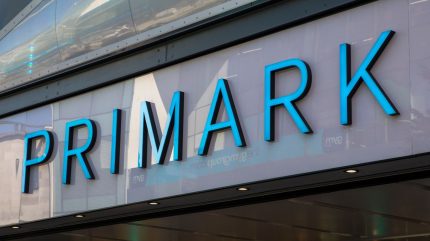
Fashion chain Primark’s owner Associated British Foods (AB Foods) is expecting the brand’s like-for-like sales (LFL) for the second half (H2) to be approximately 2% lower than those of the previous year.
In a trading update, the company stated that the decline reflects a 2.4% decrease in the third quarter (Q3) and an anticipated drop of approximately 2% in Q4.

Discover B2B Marketing That Performs
Combine business intelligence and editorial excellence to reach engaged professionals across 36 leading media platforms.
Primark will see a sales increase of 1% in H2, with a consistent growth rate of 1% in both Q3 and Q4.
In the full year of 2025, Primark expects a sales growth of around 1%, attributing approximately 4% of this growth to the expansion driven by its ongoing store rollout programme.
In the UK and Ireland, H2 sales are expected to rise by approximately 1%, marking an improvement from H1.
Primark’s market share in these regions saw an increase from 6.6% to 6.8%.

US Tariffs are shifting - will you react or anticipate?
Don’t let policy changes catch you off guard. Stay proactive with real-time data and expert analysis.
By GlobalDataIn Spain and Portugal, sales are similarly projected to grow by around 2% in H2. Sales were flat in Q3 and a 3% growth is anticipated in Q4.
In the US, Primark expects a substantial sales growth of 23% in H2, with 21% growth in Q3 and 24% projected growth in Q4.
Primark has seen a significant progress with its Click and Collect service, which is accessible at all 187 stores across Britain.
The company has opened four new stores in the US in H2, including its first in the state of Tennessee.
Associated British Foods chief executive George Weston stated: “I’m pleased with how the group has performed in the second half of our financial year in what continues to be a challenging environment, characterised by consumer caution, geopolitical uncertainty and inflation.
“Primark delivered improved trading in the UK and strong sales growth in the US, while trading on the continent was softer in a weaker consumer environment. In our food businesses, overall trading in the second half was in line with our expectations.”
AB Foods anticipates that grocery sales for the second half of the year will match the previous year’s figures, demonstrating steady performance in its international brands.
The adjusted operating profit in the grocery segment for the second half of the year is projected to fall marginally short of initial expectations, primarily due to one-off restructuring expenses.





